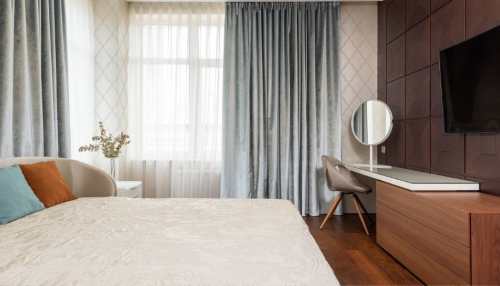- News>
- Home & Kitchen
Looking For Perfect Window Coverings For Your Home? Here Are 6 Tips To Keep In Mind

Selecting the right window coverings can significantly impact a room`s aesthetics, comfort, and privacy.
When it comes to transforming the ambiance and functionality of your living spaces, window coverings play an often underestimated role. They not only enhance your home's aesthetic appeal but also contribute to privacy, light control, energy efficiency, and overall comfort. Selecting the right window coverings is an art that combines practicality and style, allowing you to curate a space that truly resonates with your preferences and needs.
Selecting the right window coverings can significantly impact a room's aesthetics, comfort, and privacy. When choosing window treatments, consider factors like style, function, and material. Assess your room's needs; blackout options are ideal for bedrooms, while sheer curtains can enhance a living room's ambiance.
Remember this, window coverings are the unsung heroes that can transform the mood and utility of a room. They offer more than just pieces of decoration – they provide privacy, control light, and even contribute to energy efficiency.
Vaibhav Jain, CEO, Deco Window shares tips on choosing the right window coverings for your home.
Identifying the Purpose of Window Coverings
The first step in choosing the best window coverings is to understand their purpose in each room. Are you looking to maintain privacy, regulate natural light, improve energy efficiency, or purely enhance the visual aesthetics? Each room has unique requirements, and tailoring your choices to these needs is essential.
Exploring Different Types of Window Coverings
There is a wide array of window covering options available, each with its own set of advantages and considerations. Curtains, blinds, shades, shutters, and drapes offer varying degrees of light control, style versatility, and maintenance requirements.
● Curtains and Drapes: If you're aiming for a cozy and inviting ambiance, consider curtains or drapes in warm, earthy tones. Darker hues like deep blues and rich browns create an intimate setting, while warm-toned neutrals like beige and cream exude a soft and welcoming aura. For smaller rooms, opt for light-toned neutrals to maintain a sense of space.
● Blinds and Shades: Blinds and shades provide excellent light control and privacy. Opt for moisture-resistant materials like vinyl or faux wood for bathrooms, and consider blackout options for bedrooms to create a sleep-conducive environment.
Prioritizing Energy Efficiency
Window coverings also have a significant impact on your home's energy efficiency. They can prevent heat loss during winters and regulate heat gain in summers. Consider cellular shades or insulating curtains to create a thermal barrier, reducing energy consumption and utility bills.
Embracing Technological Advancements
The digital age has ushered in innovative advancements in window coverings. Smart blinds and motorized shades offer convenience and precision, allowing you to control light and privacy with a touch of a button or even through voice commands.
Choosing Colors with the Right Undertones
The color of your window coverings has a profound influence on the overall ambiance of a room. Cool tones such as blues and greens evoke a sense of calmness and tranquility, ideal for bedrooms and spaces where relaxation is paramount. On the other hand, warm tones like reds and oranges infuse energy and vibrancy, making them perfect for living areas and spaces where social interaction thrives.
Harmonizing with the Overall Decor
Window coverings should seamlessly integrate with your existing decor. Consider blending warm tones on walls and ceilings to create a cohesive and enveloping warmth. Textural layering using materials like velvet, linen, and cotton can add depth and intrigue to your interior spaces.
In denouement, the selection of window coverings is a multi-faceted process that marries functionality and style. By identifying the purpose of each room's window coverings, exploring the range of options, prioritizing energy efficiency, embracing technology, and harmonizing colors with the overall decor, you can curate spaces that are not only visually appealing but also comfortable, energy-efficient, and reflective of your unique lifestyle.
